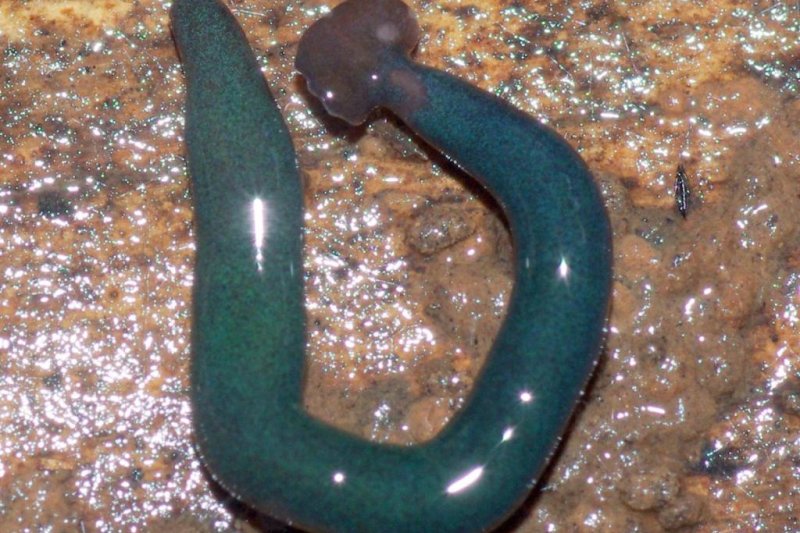One of the species, found on Mayotte, a French island off the African East Coast, is named "blue" due to its glittery turquoise appearance. Photo by Laurent Charles
May 22 (UPI) -- Scientists have for the first time identified the presence of several invasive flatworm species in France. The hammerhead flatworms have also been found in overseas French territories.
In a new paper, published this week in the journal PeerJ, scientists from the French National Museum of Natural History detailed five species of hammerhead flatworms belonging to the genera Bipalium and Diversibipalium. Some of the invasive worm species can grow to more than a foot in length.
Because hammerhead worms hunt and eat earthworms, they can potentially disrupt native biodiversity and ecological balance.
In addition to their presence in mainland France, researchers confirmed the worms' invasions of French territories in the Caribbean, South America, Africa and Oceania.
One of the species, found on Mayotte, a French island off the African East Coast, is named "blue" due to its glittery turquoise appearance.
Though researchers spent time conducting their own field work, the new survey relies heavily on observations made by citizen scientists.
Genetic analysis of several specimens suggests they are clonal species and reproduce asexually, limiting their genetic diversity.
The authors of the new study were surprised that such larger invasive species could have colonized a European country for two decades without making their way into the scientific literature.
"Bipaliines, which have their origin in warm parts of Asia, are invasive species, now widespread worldwide," researchers wrote in their paper. "However, the scientific literature is very scarce about the widespread repartition of these species, and their invasion in European countries has not been studied."















